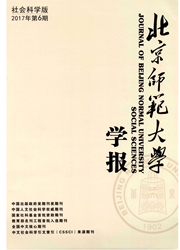

 中文摘要:
中文摘要:
2011年以来,新一轮全球债务危机的爆发和关债主权信用评级的下调,预示着主权债务问题已在全球迅速蔓延。在此背景下,有必要厘清美国债务问题的演化路径,探讨其对美国国内金融业和实体经济的冲击,以及对全球经济复苏和国际金融市场的影响。进一步,通过梳理美债问题的演进路径和内外影响,可以发现,尽管美债问题与欧债危机二者交替出现、相互影响,但在形成原因、救助措施和国际风险等方面却不尽相同。作为美国国债的最大海外持有者,中国应主动制定相关避险措施,积极反思中国的外汇战略,合理规划外汇结构,稳步推进人民币国际化,并要足够重视地方债务问题,以降低美债问题对中国的冲击。
 英文摘要:
英文摘要:
Since 2011, the breakout of a new tide of debt crisis and the degrading of the American sovereign credit rating suggests that sovereign credit problem has become a global phenomenon. Under that background, it is necessary to figure out the formation path of the American debt problem, probe into its impact on the American financial and industrial economy, and its influence on the global economy recovery and international financial market. It reveals that, even though the American debt problem appears alternatively with the European debt crisis, and they have mutual influences upon each other, their formation reasons, salvage measurements, and international risk are not entirely the same. As the largest overseas debtor of the American national debt, China should actively lay down relevant countermeasures for evasion, reflect on the foreign exchange strategies, reasonably plan foreign exchange structures, steadily advance the internationalization of Renminbi, and pay enough attention to local debts, so as to reduce the impact of American debts upon Chinese economy.
 同期刊论文项目
同期刊论文项目
 同项目期刊论文
同项目期刊论文
 期刊信息
期刊信息
